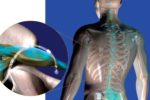Juvenile Arthritis

Live Fearlessly
As a parent, health concerns are always at the top of your mind. Few parents, however, expect to hear that their child has arthritis, and even fewer expect the journey those words take them on. July is Juvenile Arthritis Awareness Month and Healthy Kansas City is committed to raising awareness about this disease, and coming alongside of sufferers, and the parents of those affected.
What most people do not know is that nearly 300,000 children in the United States are affected by and are living with some form of juvenile arthritis. That is more than many other more commonly understood childhood diseases combined. The term “juvenile arthritis” is actually an umbrella term used to describe the many autoimmune and inflammatory conditions or pediatric rheumatic diseases that can develop in children under the age of 16. This includes conditions such as juvenile rheumatoid arthritis, lupus, and fibromyalgia. Juvenile idiopathic arthritis, or JIA, is considered the most common. When people think of arthritis, they think of their grandparents. A common misconception is that juvenile arthritis is the same as the osteoarthritis they often hear about. It’s not. Osteoarthritis is a type of arthritis that many develop as they age. It is a wearing down of the joints after years of use. Juvenile arthritis is an autoimmune disease that can develop at any age.

Types and Subtypes of Juvenile Arthritis
If you find JIA confusing, you are not alone. It is a complex form of disease with several types and subtypes. Oligoarthritis, which has a peak incidence of between one and two years of age and is seen in three times as many girls than boys, affects four or fewer joints in the first six months. The affected joints include the knees, ankles, and elbows. It does not include the hip joint but may include eye inflammation. Polyarthritis involves more of the body than oligoarthritis. It affects five or more joints in the first six months of illness. Small joints in the fingers and hand are most affected; it may also affect weight-bearing joints such as the knees and jaw. There are two forms of Polyarthritis, RF-positive and RF-negative, and is the form that most resembles the adult disease of rheumatoid arthritis. The third major type is Systemic JIA, which affects the entire body, sometimes including inner organs such as the heart, liver, and spleen. Subtypes include psoriatic JIA which include the nails, and enthesitis-related JIA which includes inflammation of the ligaments, tendons, spine, and sacroiliac (SI) joints.
Although the various types of juvenile arthritis share many common symptoms, like pain, fatigue, weight loss, fever, joint swelling, redness and warmth, each type of JA is distinct and has its own special concerns and symptoms.
It Affects More Than Your Joints
Another common misconception is that JA only affects the joints. Some types of juvenile arthritis do affect the musculoskeletal system, but joint symptoms may be minor or nonexistent. However, some forms of JA do not fall under the “classic” definition of arthritis at all and can also involve the eyes, skin, muscles and gastrointestinal tract, according to the Juvenile Arthritis Foundation.

Early Signs of Juvenile Arthritis
Spotting JA early is difficult as children, especially younger children, may have difficulty in expressing the specifics about their pain. Early onset can begin with things like pain in the joints of fingers and toes. Parents may notice discomfort at diaper changing, or when putting on clothes or shoes. The child may start limping or be unable to perform recently learned motor skills
The Latest Research is Promising
Although common, JA is still a mystery in many ways. Fortunately, there much continued research in the area, according to the Arthritis Research Foundation. One such promising study is being conducted at the Brigham & Women’s Hospital of Harvard Medical School in Boston by Dr. Altan Ercan. Dr. Ercan is studying what may predispose children to Juvenile Idiopathic Arthritis. In adult rheumatoid arthritis (RA), it is understood that one class of the sugar structure (G0) is present in greater abundance in RA patients, suggesting that antibody sugars may be an important contributor to RA. Little is known about the same process in children, however. Dr. Ercan investigated G0 sugars among healthy children and patients with juvenile idiopathic arthritis (JIA).
According to his results, published recently in Arthritis & Rheumatism, an unusually elevated proportion of G0 is found in patients with multiple different forms of JIA. The study also showed that healthy children at the peak age of JIA onset, 2-3 years, also showed a higher G0 proportion, suggesting one way in which the immature immune system may predispose children to arthritis.
In a study published in Annals of Rheumatic Diseases and Proceedings of the National Academy of Sciences of the USA, a team of scientist and doctors from SingHealth Duke-NUS Academic Medical Center (AMC) report to have uncovered a new group of regulatory T-cells (Treg) and DNA features associated with JIA. Treg cells are a subset of white blood cells which regulate the body’s immune system. An irregular number of these cells can mean ones immune tolerance can fail, resulting in an autoimmune disorder such as JA. Understanding this, clinicians could potentially use this novel group of cells as a marker to diagnose patients, as well as predict and monitor a patient’s responsiveness to therapy. These cells are also readily detectable in a patient’s bloodstream, making testing relatively easy and pain-free.
The study also found that currently, only about one-third of JIA patients get better after medication or therapy, while the rest continue to see their condition flare up even after treatment. Surprisingly, the study found that the key is not in individuals’ genetic make-up but rather, in how their bodies employ genes. Even patients with identical genetic backgrounds could experience different clinical outcomes based on their DNA features that activate genes differently.
Together these studies could help doctors to predict treatment responses and customize therapies to prevent complications.

Juvenile Arthritis Treatments
Since research is finding that JA varies so widely, there isn’t a one-size-fits-all treatment. While there is not yet a cure, the number of effective treatment plans is growing with our expanding research and growing understanding. Treatment plans can include medications such as corticosteroids, anti-inflammatory NSAIDS, and anti-rheumatic DMARDS. Regular exercise and proper nutrition including anti-inflammatory foods are also helpful in many cases. In certain instances, surgery can sometimes be an option in advanced stages to help relieve pain or improve the function of the joints.
Over the last decade, there have also been significant advances in the treatment of arthritis, especially for those who do not respond well to conventional therapies. The most significant and promising of these advances is in the area of a group of drugs called biologic response modifiers, or biologics.
One popular medical use to treat arthritis and joint pain is turmeric. Not only does turmeric benefit inflammation, but it’s also a natural pain reliever. Its anti-inflammatory properties help reduce the swelling that often causes pain and discomfort. Curcumin stops tissue degeneration while suppressing substances that destroy healthy cells. A study in 2006 showed that turmeric prevents inflammation better than suppressing it.
If you have tried other options with no success, turmeric for joint pain is another option. Turmeric works best with a physical rehab plan. A good plan lowers joint stiffness and improves mobility. Make sure that turmeric supplementation doesn’t interfere with any medications you are taking.
Taking Ownership
Another exciting aspect of research is in helping teens with JIA improve their health-related quality of life through online education and self-management. In a recently released study co-authored by Jennifer Stinson, RN-EC, PhD, CPNP, Scientist in Child Health Evaluative Services at The Hospital for Sick Children (SickKids) in Toronto, Ontario, Canada and published on rheumatology.org, research found that teen participating in online education coupled with a health management coach experienced “a significant overall reduction in pain interference in enjoying daily life for the intervention participants compared to the control group, after adjusting for baseline level of interference.”
Living with Juvenile Arthritis
Because so few people understand JA, even fewer understand what it is like to live with it, or what it is like to have a family member with it.
For the parent it can be frightening. It may mean not knowing what the future holds for their child, or how their child’s life may be changed by the disease. It is often painful, too, for the parent, to see their child in pain and struggle through the disease. It may mean many hard decisions, such as about medication that could have a lifelong impact.
For the child, it can mean being misunderstood. Friends, relatives, and teachers, for example, may not understand the limitations. Some patients with JA do not reach their growth potential and can have vision problems among many other issues.
But one this is sure. Having JA does not mean you need to stop living. While parents may worry about what the child’s future may bring, that worry does not need to be paralyzing. In fact, it can be inspiring.
The good news is that the vast majority of people that grow up with juvenile arthritis go on to live wonderful, happy, successful lives. The difficulties involved in JA can be an opportunity to stretch and explore the possibilities in a whole new way and doing everything you want in a way you never expected. Milestones associated with physical abilities may shift and change, for example, but it is an opportunity to be open to a change of plans — and those plans can be stellar.
For more information, Healthy Kansas City invites you to research further. Get informed and support greater JA awareness.
Sources:
American College of Rheumatology: rheumatology.org
The Arthritis Foundation: arthritis.org
National Arthritis Research Foundation: curearthritis.org






